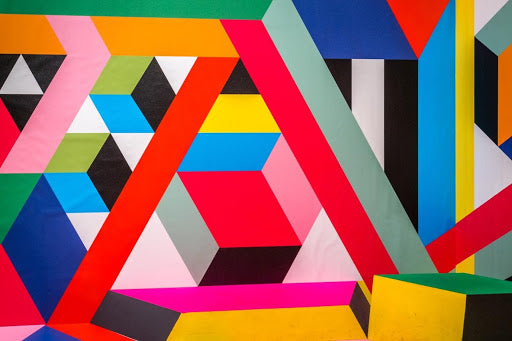The Evolution of Abstract Art in the 21st Century 📰

Popularized by names such as Jackson Pollock and Willem De Kooning, abstract art has seen various evolvements ever since it was introduced. As the politics and the way societies governed changed, abstract art shifted along with it. Furthermore, artists' intent and motivations dominated the way they portrayed their abstractions in many of their works.
As we attempt to study the pioneers of abstract art, it is also equally important to study those who continue to take the medium forward – some who learn and capture the works of previous popular artists, while others who attempt to create their own definitions of abstract art. Read on to find out how art has evolved and notable name in the abstract art world in the 21st century:
Art in the 21st Century
Art in the 21st century is an ever-growing field that evolves with each passing decade. As artists attempt to mix new forms, the field of art becomes so dynamic that the imaginative dimensions of the artist and observers expand even more.
One of the key features that have affected art in the 21st century is the concept of globalization ie., the increasing dependency and interconnectivity between various countries, cultures, and people. Mostly due to the advent of the new digital age, awareness of local cultures has extended beyond borders, and art events have now become more fast-paced than before. It has come to the point that anyone who has access to the internet or any mass media outlet can now view some of the most famous paintings stored across the globe. Not only the painting but information with regards to art history, culture, and artist is now easily accessible to anyone.
If two aspects were highlighted that largely influenced the art world, they would be:
- Visual Culture:
This includes various digital media sources such as photography, videography, etc. By influencing all populations over the globe, visual media has attempted to capture identity, gender, class, power relationships, politics, mental health, and other social values all in the art industry. As the medium continues to rise, artists are now including visual imagery to get their message across.
- Public Art:
This was a well-established technique well before the 21st century, attracting art lovers in public spaces to enjoy the installations around them. They came in the form of monuments, murals, graffiti, and collaborations across various professions such as artists, engineers, and architects. However, what was different about 21st-century public art was the fact that they included participatory approaches that included a sort of interaction between the installation and observer. Many artists continue to do this through the visual or hearing element of light and sound where they alter each node based on the theme being discussed. Furthermore, artists have also chosen to expand on performance-based art in order to get their message across.
Notable 21st Century Abstract Artists
21st-century abstract art cannot be understood without knowing the names of those who contribute to the Abstract Art movement. Many people attempt to study the artists who kickstarted the movement, but not those who continue to contribute to the evolvement of it.
When attempting to highlight those that stand out in the abstract art world, the list is never-ending. Nonetheless, the following names contribute to the polarity, diversion, and inspiration to the movement through each of their abstractions:
Tomma Abts
A German abstract art painter, Tomma Abts has been using the same canvas size for nearly twenty years. She uses a combination of geometric compositions and abstractions that often overlap in multitudes. Defining ignoring the demand to describe her visual style, Abts has won several awards that are a testament to her ever-growing contributions to the abstract art world in the 21st century.
Mark Bradford
Mark Bradford is known to combine methods of painting, collage, and decollage in all its abstractions. He attempts to create a relationship between the past and present realities that are portrayed through his unique technique. Not only has Bradford influenced many young artists with his work, but he is also a philanthropist in the art world who provide a place for at-risk neighbors to participate in the arts.
Nicholas Hlobo
South African artist, Nicholas Hlobo, bases his abstract work on a time where feelings and emotions will be more important than data and analytics. Influenced by the culture around him, Hlobo attempts to capture an abstraction that portrays a hopeful future as seen by the eyes of the artist.
Julie Mehretu
Ethiopian born American painter, Julie Mehretu, works with an abstraction that captures an entire visual civilization. Each of her works encompasses complex structures that multiply and develop various interdependencies. As she does this, she showcases the interconnected age in which we are living today.
Odili Donald
Odili Donald is one of the few artists that bring interconnectedness between indigenous art and Western Modernism. He uses a number of colors, patterns, and forms to express modern-day abstraction and his native Nigerian thought. His work is often displayed in public places and showcase energy and brightness.
Thomas Scheibitz
Thomas Scheibitz is a German artist who proves how flimsy structures and shapes contribute into abstract art paintings. Combining different concepts such as Futurism and Cubism, Scheibitz creates unfamiliar forms of abstractions that attempt to showcase a new sort of art dimension.
Conclusion
As politics change and globalization continues to increase, we will notice more shifts in the way abstract art revolutionizes itself. The evolution of abstract art is noteworthy and it is important to study the pioneers and modern artists that continue to contribute to the movement as a whole.












